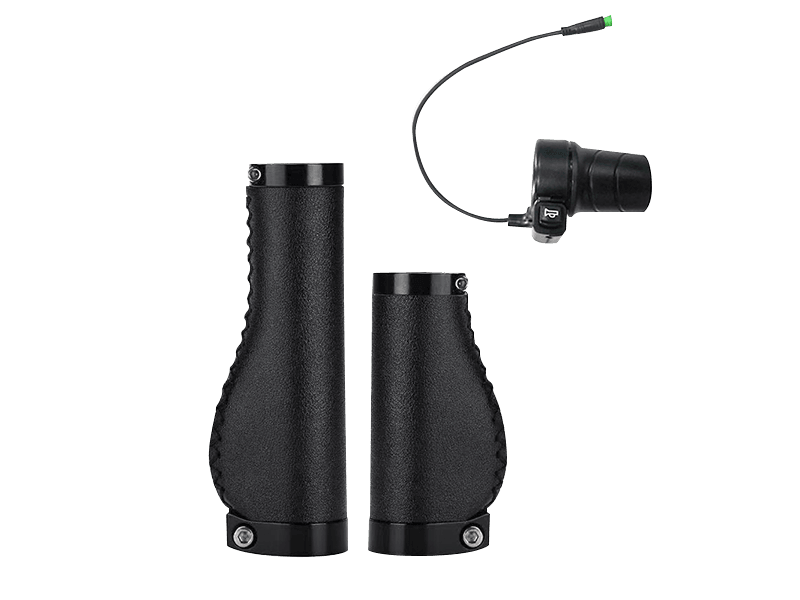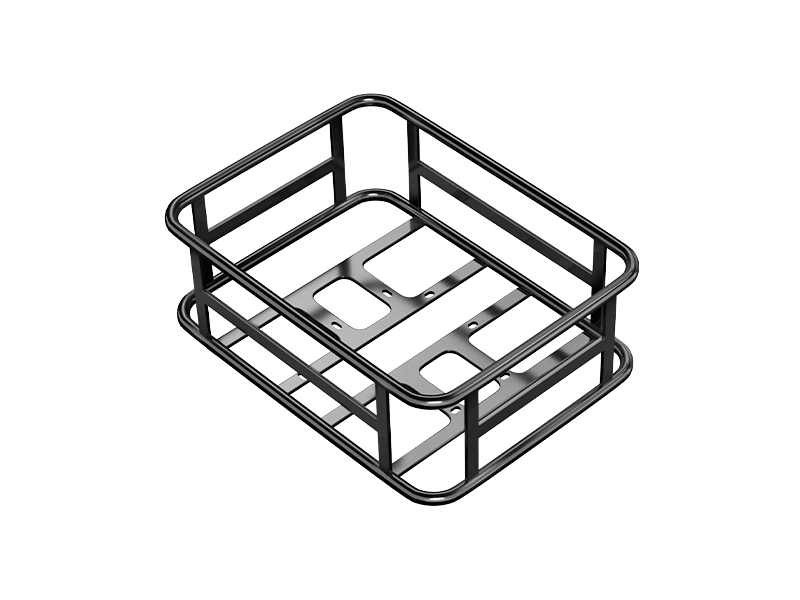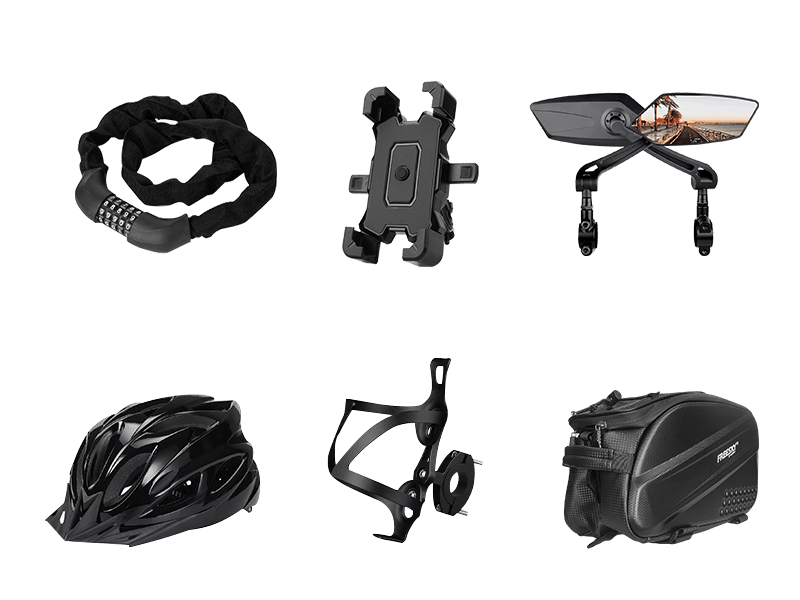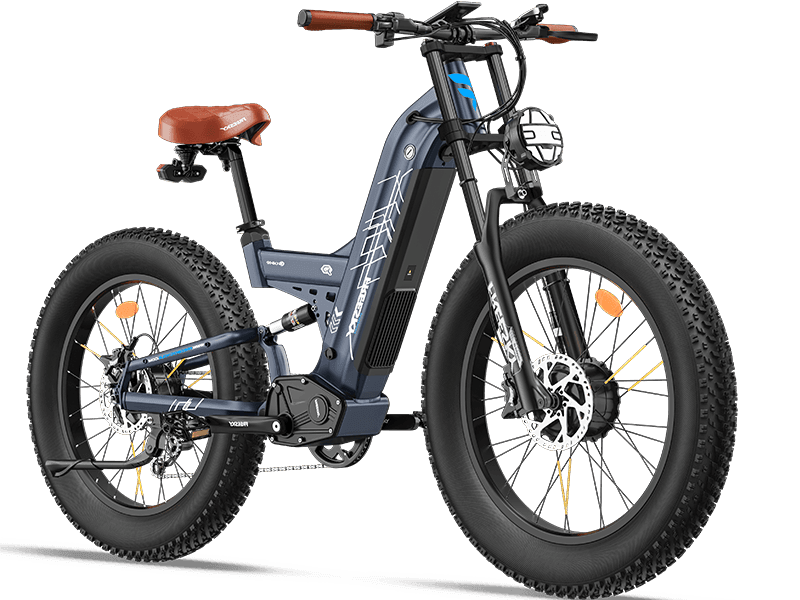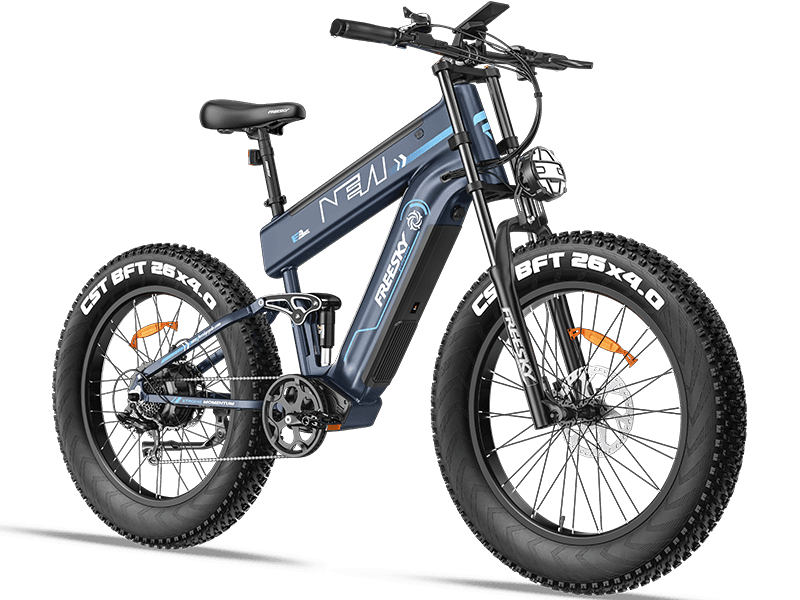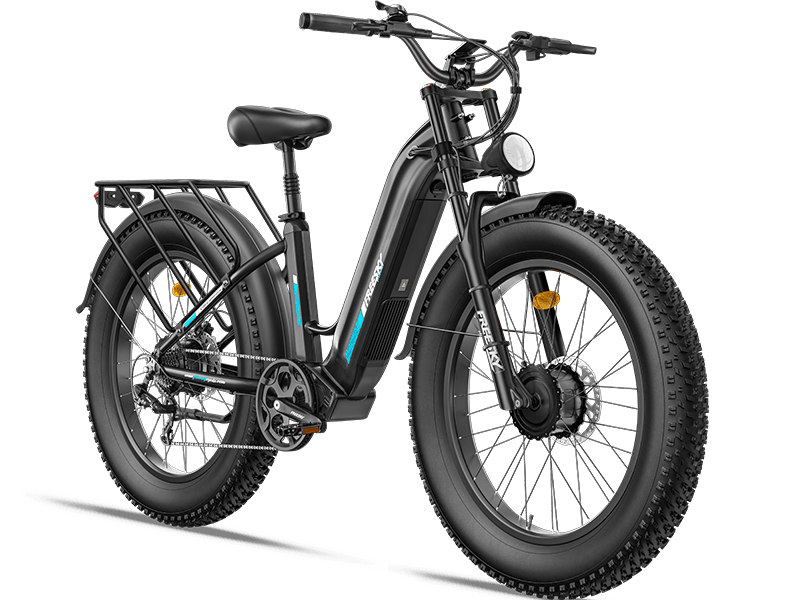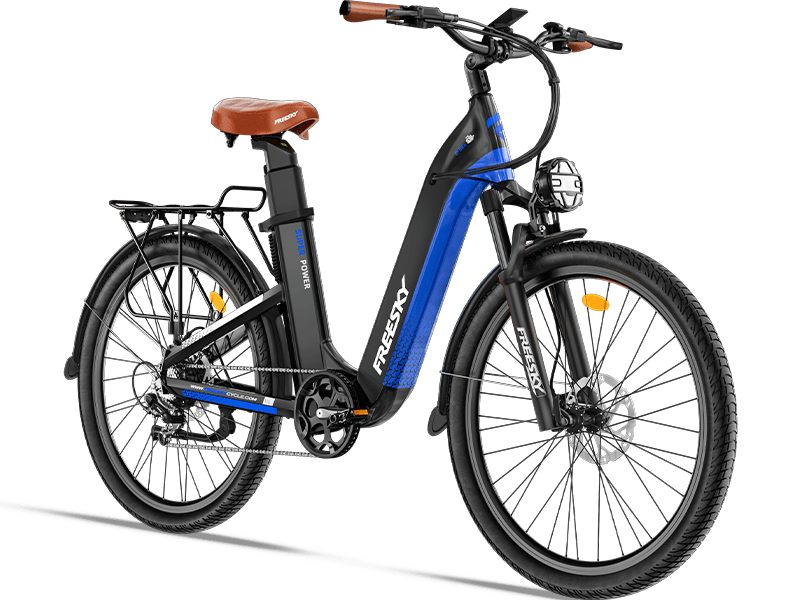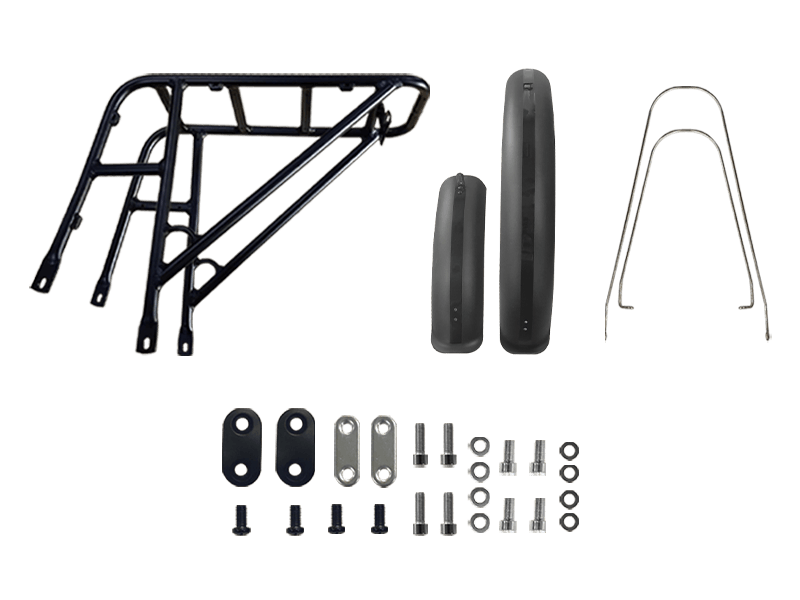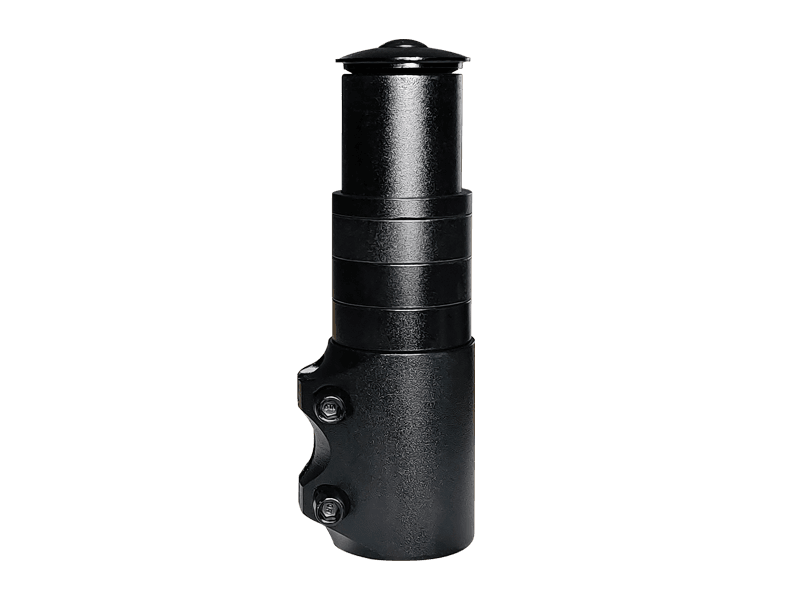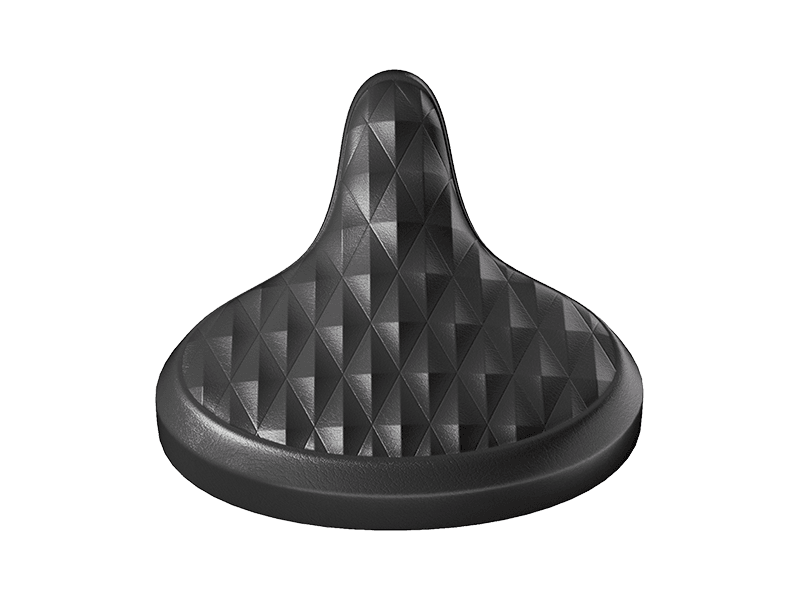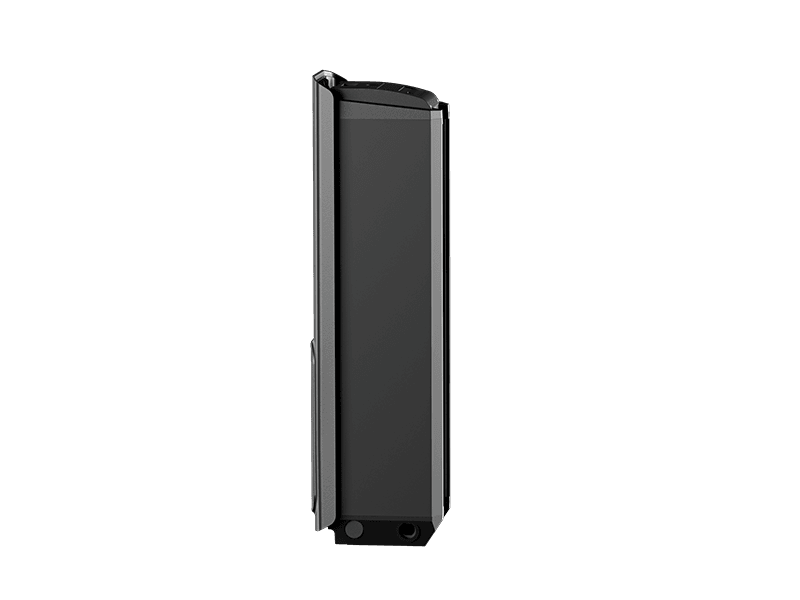Freesky Alaska Pro vs. Cyrusher Ranger: Which Fat Tire E-Bike Suits Your Adventures?
AUG 15, 2025
Choosing the right fat tire e-bike isn’t just about specs—it’s about finding a ride that feels safe, reliable, and suited to your typical routes. Freesky Alaska Pro and Cyrusher Ranger each offer strong points, but in different riding scenarios.
Design Philosophy: Safety and Versatility
Freesky Alaska Pro – Powerful and Stable
Alaska Pro features dual removable batteries, full suspension, and 26"x4" fat tires designed for stability across varied surfaces. The aluminum frame, 4-piston hydraulic disc brakes, and responsive gear system ensure controlled rides on inclines or uneven terrain. Every component is chosen to support confidence and safety, whether you’re commuting, climbing moderate hills, or enjoying extended rides.
Cyrusher Ranger – Comfortable and Practical
Ranger prioritizes comfort and ease. Its 250W rear hub motor, 52V 20Ah battery, and torque sensor are optimized for city roads and light trails. Puncture-resistant tires, front suspension, and a reliable brake system ensure smooth, predictable handling in urban or moderately uneven environments.

| Feature | Freesky Alaska Pro | Cyrusher Ranger |
|---|---|---|
| Motor | 12OOW Rated, 25OOW Peak(130 N·m) | 250W Rear Hub (95 N·m) |
| Battery | 48V 41Ah Dual (~1968Wh) | 52V 20Ah LG (~1040Wh) |
| Range | 90–160+ miles(144-257 km) | 74 miles (120 km) |
| Max Hill Climb | 40° | Not officially disclosed |
| Suspension | Full Suspension (Lockable Hydraulic Fork + Rear Shock) | Front Suspension Fork w/ Lockout |
| Brakes | 4-Piston Hydraulic Disc | Hydraulic 180mm Front/Rear |
| Gear System | 7-Speed Shimano | 9-Speed Shimano |
| Payload Capacity | 300 lbs | 350 lbs |
| Riding Modes | 5 Modes + Pedal Assist | 5 Levels PAS |
Ride Experience: Confidence Over Extremes
Freesky Alaska Pro – Controlled Power and Endurance
-
Reliable Climbing: 12OOW rated / 25OOW peak motor provides controlled assistance for hills.
-
Long-Range Reliability: Dual batteries extend ride distance to 90–160+ miles(144-257 km).
-
Enhanced Safety: Full suspension plus 4-piston hydraulic brakes offer stable stopping power.
-
Ideal For: Riders seeking reliable power, long-range rides, and confident braking across a variety of surfaces.
Cyrusher Ranger – Comfortable Urban Riding
-
Smooth City Commuting: Torque sensor and 250W motor optimize pedaling efficiency.
-
Moderate Terrain: Suitable for light trails and paved paths, not designed for steep inclines.
-
Ideal For: Urban riders and casual weekend cyclists who prioritize comfort and predictability.
Key Difference: Reliability vs. Everyday Utility
-
Freesky Alaska Pro: Focused on strong, controllable power, long-range capability, and safety features to handle varied riding conditions with confidence.
-
Cyrusher Ranger: Offers urban-friendly comfort, suitable for lighter terrain and moderate distances.


